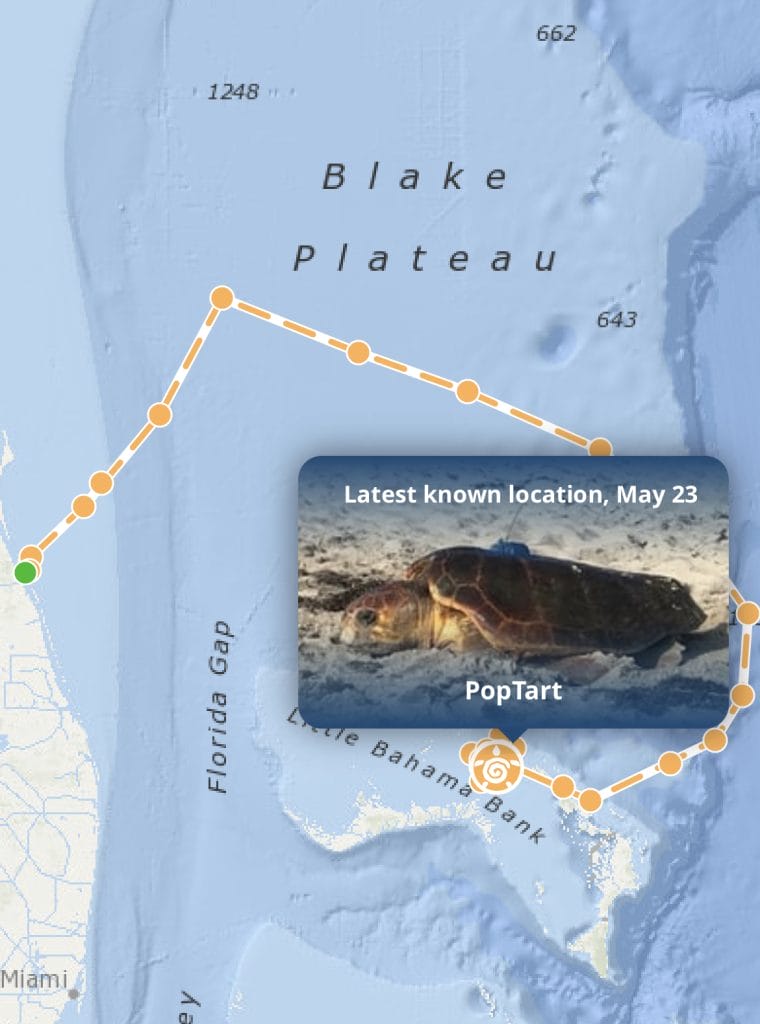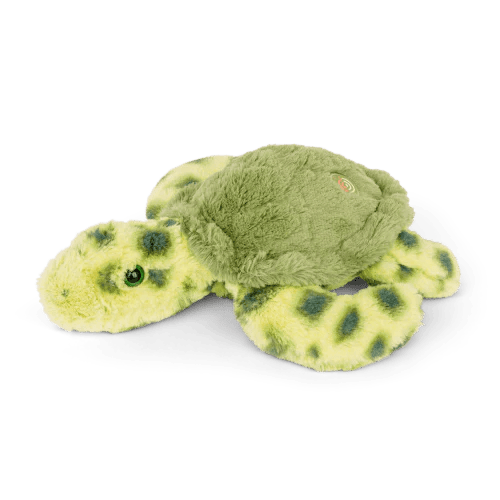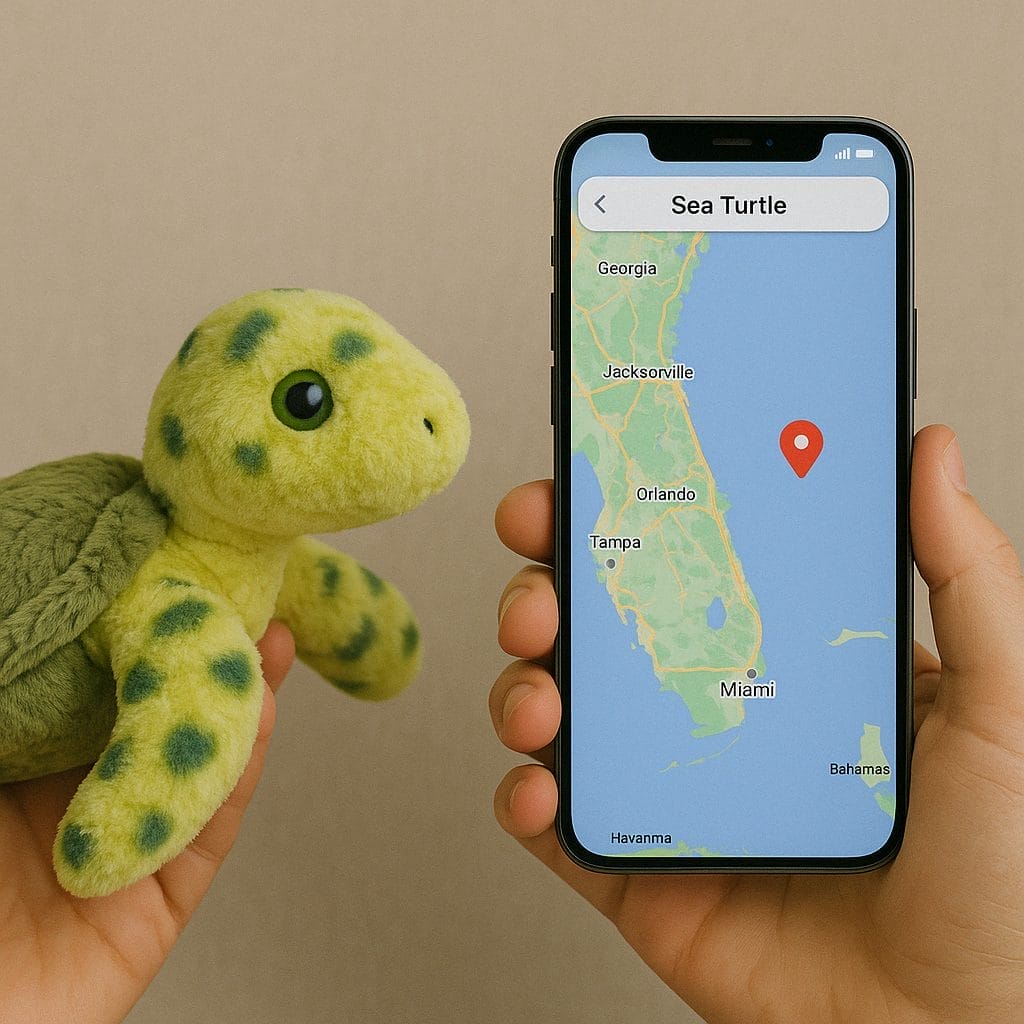100% of Baby Sea Turtles Have Plastic Inside: The 14-Piece Death Sentence

This post was created with help from AI tools and carefully reviewed by a human (Muntaseer Rahman). For more on how we use AI on this site, check out our Editorial Policy.
The veterinarian’s hands trembled as she counted for the third time. 287 pieces.
Inside this palm-sized loggerhead hatchling—barely three inches long and weighing less than a smartphone—were 287 fragments of human garbage.
Bottle caps ground into confetti. Grocery bag shreds twisted like synthetic seaweed.
Fishing line tangled with what might have been a balloon. Together, this plastic arsenal made up 1.23% of the baby turtle’s entire body weight.
“It’s like finding 2 pounds of plastic inside a 160-pound human,” Dr. Sarah Mitchell later told reporters at the Florida Marine Research Center. “Except this little one never even made it past her first week.”
This nameless hatchling, catalogued simply as “LH-2023-0847,” has become the poster child for an apocalyptic reality: every single baby sea turtle tested in recent studies has plastic in their system.
Not most. Not many. All of them.
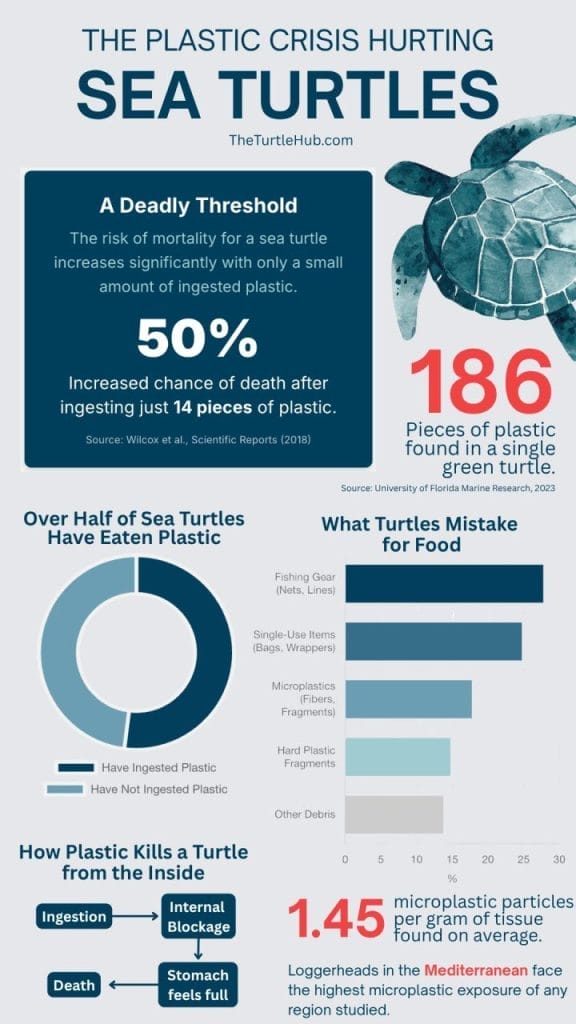
The Ancient Mariners Meet Modern Monsters
For over 100 million years, sea turtles have been Earth’s ultimate survivors. They outlasted the dinosaurs, survived ice ages, and adapted to every major oceanic shift our planet threw at them.
Their ancestors watched continents drift apart. They evolved alongside the first flowers, witnessed the rise of mammals, and perfected an existence so successful that their basic body plan hasn’t changed in 50 million years.
Today, these living fossils face an enemy evolution never prepared them for: our plastic.
The numbers tell a story of systematic poisoning:
According to groundbreaking research from the University of Manchester published in 2025, microplastics were found in 98.8% of all tissue samples from loggerhead sea turtles.
Not just in their stomachs—in their hearts, brains, kidneys, and reproductive organs.
Scientists discovered cotton microfibers literally embedded in heart tissue, visible under specialized imaging.
“We’re not just talking about turtles eating plastic bags,” explains Dr. Elena Rodriguez, who led the Mediterranean study. “We’re talking about plastic infiltrating every system in their bodies. It’s in their bloodstream. It’s in their brains.
Male turtles showed the highest concentrations in their reproductive organs, which has terrifying implications for future generations.”

Track A Real Sea Turtle With Each Bracelet!
Learn Name
You get to learn your sea turtle’s name, size, age. Also a picture!
Enjoy Stories
Enjoy the story of your sea turtle, where it came from, where is it going?
Follow Me
You get to follow the sea turtle’s journey on an interactive tracking map!
Click Here & Use Coupon Code: THETURTLEHUB20 For A 20% Discount!
The Mathematics of Death
Here’s where the data becomes a death sentence: Australian researchers studying 246 deceased sea turtles discovered a chilling threshold.
One piece of plastic = 22% chance of death. Seven pieces = 37% mortality. Fourteen pieces of plastic creates a 50/50 coin flip for survival.
Beyond 14? The odds plummet. At 226 pieces, death becomes virtually certain.
Remember our 287-piece hatchling? She never stood a chance.
But plastic doesn’t always kill quickly. Sometimes it’s a slow starvation, a gradual poisoning that researchers call “the cruelest death in the ocean.”
This Hilarious Turtle Book Might Know Your Pet Better Than You Do
Let’s be real—most turtle care guides feel like reading a textbook written by a sleep-deprived zookeeper.
This one’s not that.
Told from the snarky point of view of a grumpy, judgmental turtle, 21 Turtle Truths You’ll Never Read in a Care Guide is packed with sarcasm, sass, and surprisingly useful insights.
And hey—you don’t have to commit to the whole thing just yet.
Grab 2 free truths from the ebook and get a taste of what your turtle really thinks about your setup, your food choices, and that weird plastic palm tree.
It’s funny, it’s honest, and if you’ve ever owned a turtle who glares at you like you’re the problem—you’ll feel seen.
Luna’s Last Journey: A Green Turtle’s Story
Luna was what researchers call a “frequent flyer”—a juvenile green turtle who’d been rescued, rehabilitated, and released three times over two years.
Each time, she returned to the rehabilitation center thinner, weaker, and carrying more plastic.
Her X-rays became a timeline of human waste.
- First visit: 6 pieces, mostly fishing line.
- Second visit: 23 pieces, including bottle cap fragments that had perforated her intestinal wall.
- By her third arrival, Luna weighed 40% less than a healthy turtle her size should.
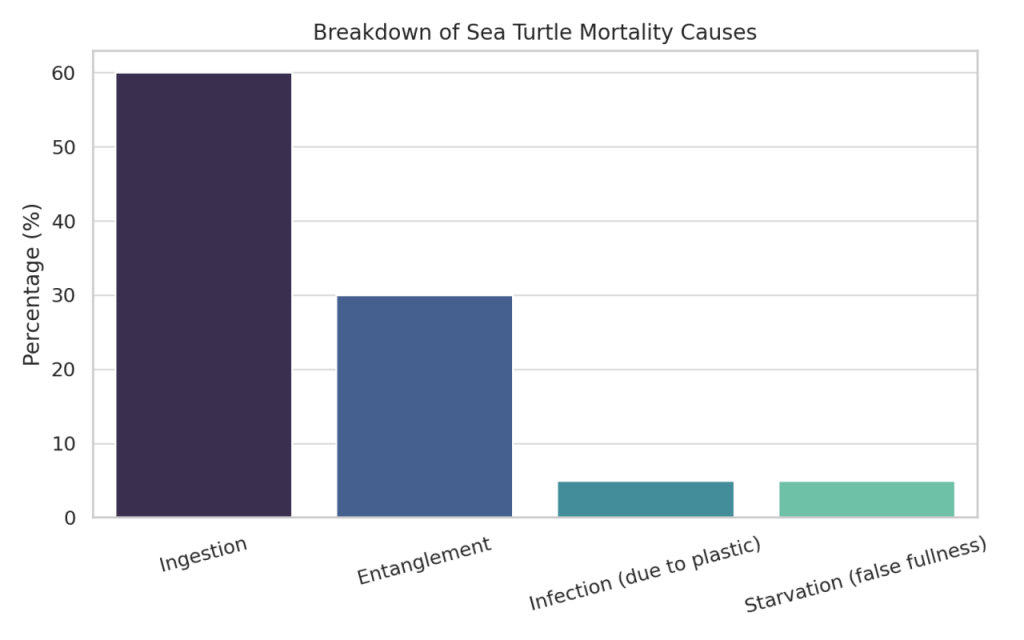
The plastic in her gut created what veterinarians grimly call “false fullness”—she felt full while literally starving to death.
“The downward-facing spines in a sea turtle’s throat mean they can’t vomit,” explains Dr. James Chen at the Gumbo Limbo Nature Center. “Once plastic goes down, it never comes back up. It just accumulates.”
Luna’s necropsy revealed 47 pieces of plastic. Well above the 14-piece threshold. The official cause of death was listed as intestinal impaction, but the real killer was a thousand human choices: every carelessly discarded bottle, every balloon release, every “just one bag won’t matter” moment.
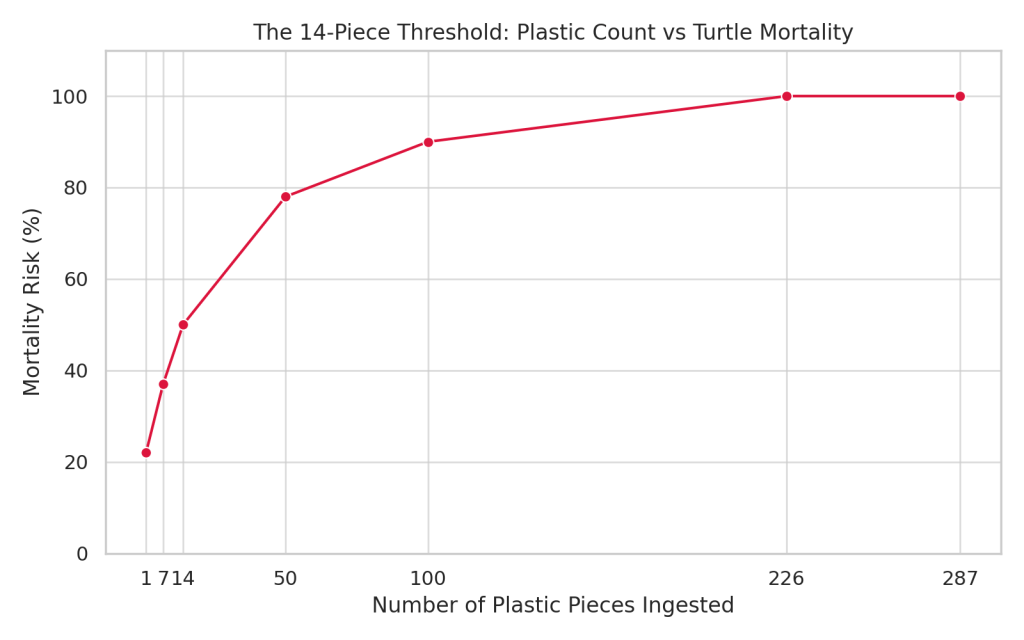
Snuggle a Plush. Track a Turtle.
🧸 + 🌊 = 🐢 A toy that connects you to real sea turtles in the wild.
Meet Your Turtle
Scan the tag to meet your real sea turtle. Learn its name, species, and see a real photo!
Follow the Journey
Watch your turtle swim across the ocean using the 3D tracking map. It’s like a sea adventure in your pocket.
Support Wildlife
Every plush supports turtle conservation efforts through the Sea Turtle Conservancy.
Click Here & Use Coupon Code: THETURTLEHUB20 For A 20% Discount! (Your hug helps a turtle.)
The Geography of Catastrophe
Not all oceans are equally deadly, though none are safe. Mediterranean loggerheads face an 80% contamination rate. Brazilian waters show 90-100% of juvenile green turtles with plastic inside them.
In the Pacific, the infamous Great Pacific Garbage Patch creates a lethal maze where 46% of the debris by mass is fishing gear—ghost nets that kill over 1,000 sea turtles annually.
Recent studies from Ecuador found green turtles consuming between 312 to 430 pieces of microplastic every single day. That’s one piece of plastic every three minutes during daylight feeding hours.
Regional differences in plastic types tell the story of local human habits:
- Mediterranean: 85.3% synthetic fibers from textile pollution
- Pacific: Unique presence of microbeads, hard fragments from Asian manufacturing
- Atlantic: 77.1% fibers, heavy contamination from American and European rivers
- Indian Ocean: Lower overall rates but dominated by fishing gear

Kemp’s Story: When Rescue Comes Too Late
The call came in at dawn: a Kemp’s ridley turtle, the world’s rarest sea turtle species, tangled in what looked like a “floating rainbow” off the Texas coast.
By the time the rescue team arrived, they found Kemp (as they’d later name him) wrapped in balloon ribbons, fishing line, and plastic strapping.
The entanglement was just the visible problem. During his rehabilitation, Kemp passed piece after piece of colorful plastic.

The final count: 73 fragments, mostly from balloons. The rescue team traced some pieces to a party goods company whose “biodegradable” balloons were anything but.
“People release balloons thinking they’ll just disappear into the sky,” says rescue coordinator Maria Santos. “They don’t think about where they come down. To a sea turtle, a deflated balloon looks exactly like a jellyfish—their favorite food.”
Kemp survived, barely. He now lives in a rehabilitation facility, his digestive system too damaged for release. He’s become an ambassador for his species, but his keepers know the dark truth: for every Kemp saved, dozens die unseen.
The Invisible Invasion: Microplastics in the Next Generation
Perhaps the most horrifying discovery came in 2024 when researchers began examining sea turtle nests.
They found microplastics in 100% of nests tested, penetrating up to 60 centimeters deep into the sand. More shocking still: microplastics inside the eggs themselves.

“We’re seeing contamination before these turtles even hatch,” reports Dr. Patricia Williams from the University of Florida.
“The average loggerhead nest contained 7.29 pieces of microplastic, with 1.46 particles per individual egg. These turtles are literally born pre-poisoned.”
The implications cascade through generations. Turtles born with plastic already in their systems face compromised immune systems, altered development, and potentially skewed sex ratios (temperature changes from plastic-contaminated sand can affect sex determination in turtle eggs).

Oliver’s Story: A Hatchling’s First and Last Swim
Watching baby sea turtles race to the ocean is supposed to be magical. Tourists gather on beaches worldwide for the spectacle—hundreds of tiny flippers scrambling across sand toward moonlit waves. But marine biologist Dr. Rebecca Palmer sees something else now.
“I watch them heading straight into a minefield,” she says.
Oliver (tracked as part of a post-hatchling study) made it past the breakers. In the wild, his instincts should have guided him to floating sargassum mats—natural nurseries where baby turtles find food and shelter.
Instead, ocean currents had collected something else in those convergence zones: plastic.
Within his first week of life, Oliver had ingested 42 pieces of microplastic. Researchers know this because they found his tiny body washed back ashore, part of the 92.86% of post-hatchling loggerheads that show plastic contamination in the Gulf of Mexico.
“The really heartbreaking part,” Dr. Palmer notes, studying Oliver’s necropsy results, “is that he did everything right. He followed millions of years of evolved instinct. We’re the ones who changed the ocean.”

The Chemical Time Bomb
It’s not just the physical plastic. These synthetic materials act like toxic sponges, absorbing chemicals from seawater—PCBs, DDT derivatives, flame retardants, heavy metals.
When a turtle eats plastic, it’s also ingesting concentrated doses of some of the ocean’s deadliest pollutants.
New research from 2025 found these chemicals in turtle tissues at concentrations 100,000 times higher than in surrounding seawater. The effects ripple through their biology:
- Suppressed immune systems, making turtles vulnerable to fibropapillomatosis (turtle tumors)
- Disrupted hormones affecting reproduction
- Liver damage from processing toxins
- Neurological impacts from heavy metals accumulating in brain tissue
“We’re not just stuffing them with plastic,” explains toxicologist Dr. Michael Harrison. “We’re slowly poisoning every system in their bodies.”

Racing Against Time: The Numbers That Haunt
Every 9 hours, another sea turtle dies from plastic-related causes. That’s 1,000+ confirmed deaths annually from entanglement alone, and countless more from ingestion.
With 8 million pieces of plastic entering our oceans daily—equivalent to one garbage truck dumping its load every minute—the crisis accelerates exponentially.
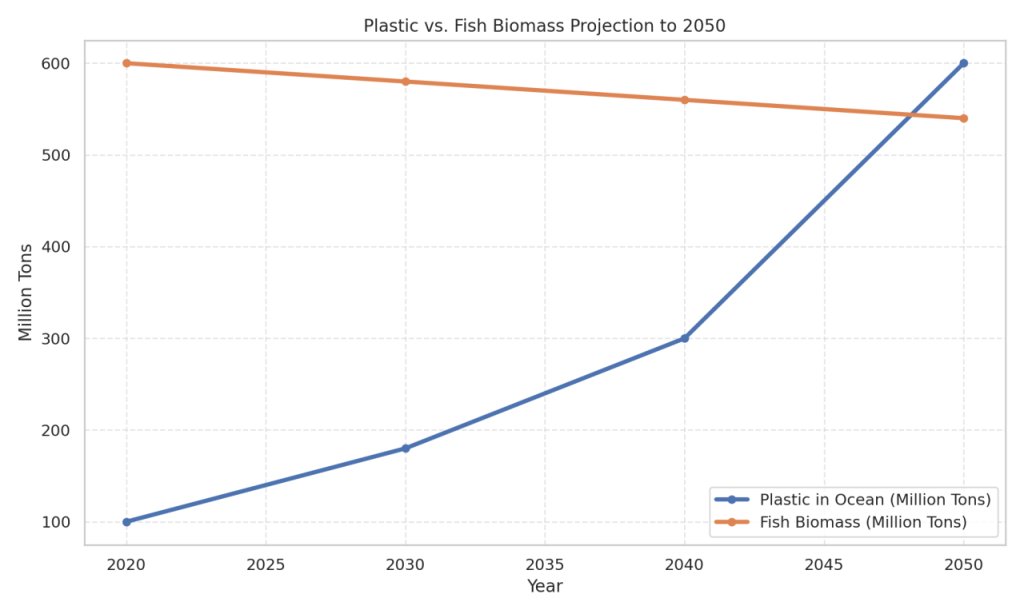
Current projections terrify researchers: by 2050, plastic in the ocean will outweigh all fish combined.
For species already hovering near extinction, like Kemp’s ridley (fewer than 10,000 nesting females remain), there may not be a 2050.
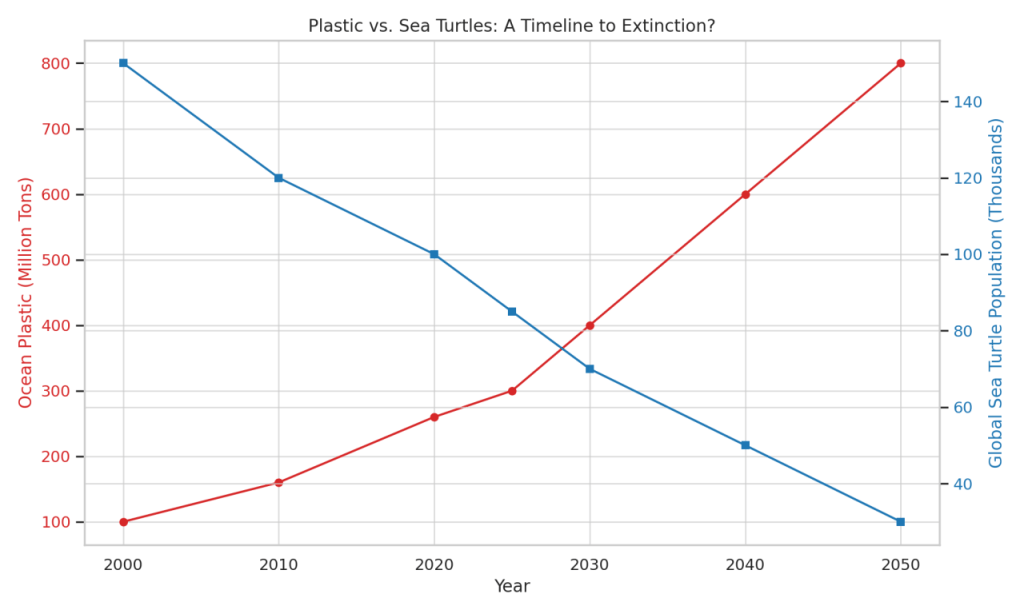
Hope in Action: What One Person Can Do
The stories of Luna, Kemp, and Oliver don’t have to be the final chapter. While the statistics feel overwhelming, change happens through individual choices multiplied by millions.
Immediate actions that save turtle lives:
1. Never release balloons. That celebration moment creates a death trap in the ocean. Choose bubbles, flags, or planted trees instead.
2. Refuse single-use plastics religiously. Every bag, straw, and bottle you reject is one less potential killer. Carry reusables like your life depends on it—because theirs does.
3. Pick up beach litter, even if it’s not yours. Studies show that 80% of ocean plastic comes from land. That wrapper you grab could be the 14th piece a turtle doesn’t swallow.
4. Choose products with minimal packaging. Buy in bulk, select cardboard over plastic, support companies using biodegradable materials.
5. Join or support beach cleanups. The Ocean Conservancy has removed over 348 million pounds of trash through coastal cleanups. Every piece matters.
6. Demand corporate responsibility. Support legislation banning single-use plastics. Contact companies about excessive packaging. Vote with your wallet.
7. Spread awareness like wildlife depends on it. Share the 14-piece statistic. Explain why balloons kill. Make the invisible visible.
The Epitaph We’re Writing
In research facilities around the world, scientists maintain what they call “specimen archives”—catalogs of deceased wildlife that tell the story of our times.
The sea turtle section grows monthly. Each entry includes standard data: species, size, location found. But recently, a new column appeared in these databases: “Plastic count.”
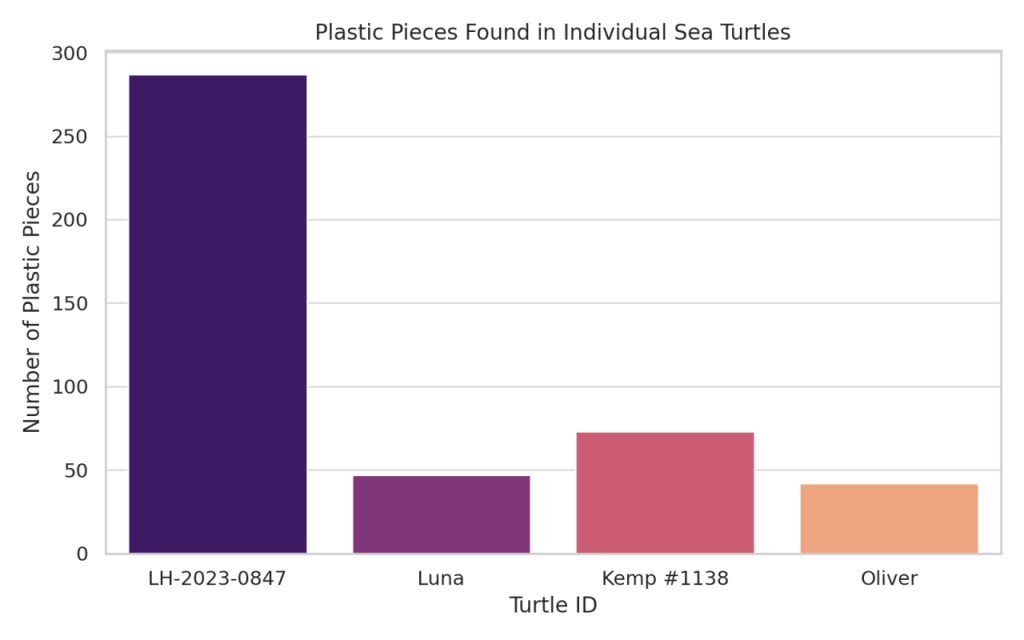
- LH-2023-0847: 287 pieces Green Turtle “Luna”: 47 pieces
- Kemp’s Ridley #1138: 73 pieces Post-hatchling “Oliver”: 42 pieces
These numbers represent more than data points. They’re accusations. They’re epitaphs we’re writing one plastic piece at a time.
But they’re also a countdown we can still stop.
Because somewhere tonight, on a dark beach, another clutch of sea turtle eggs is preparing to hatch.
In two months, 100 tiny turtles will scramble toward the waves, their DNA carrying 100 million years of survival instructions.
Whether they encounter sargassum or six-pack rings, jellyfish or plastic bags, food or the 14 pieces that spell death—that’s still being decided.
By you. By me. By every choice we make between now and then.
The baby sea turtles born tomorrow don’t have to carry 287 pieces of our garbage. But only if we stop giving it to them today.

About Author
Muntaseer Rahman started keeping pet turtles back in 2013. He also owns the largest Turtle & Tortoise Facebook community in Bangladesh. These days he is mostly active on Facebook.


